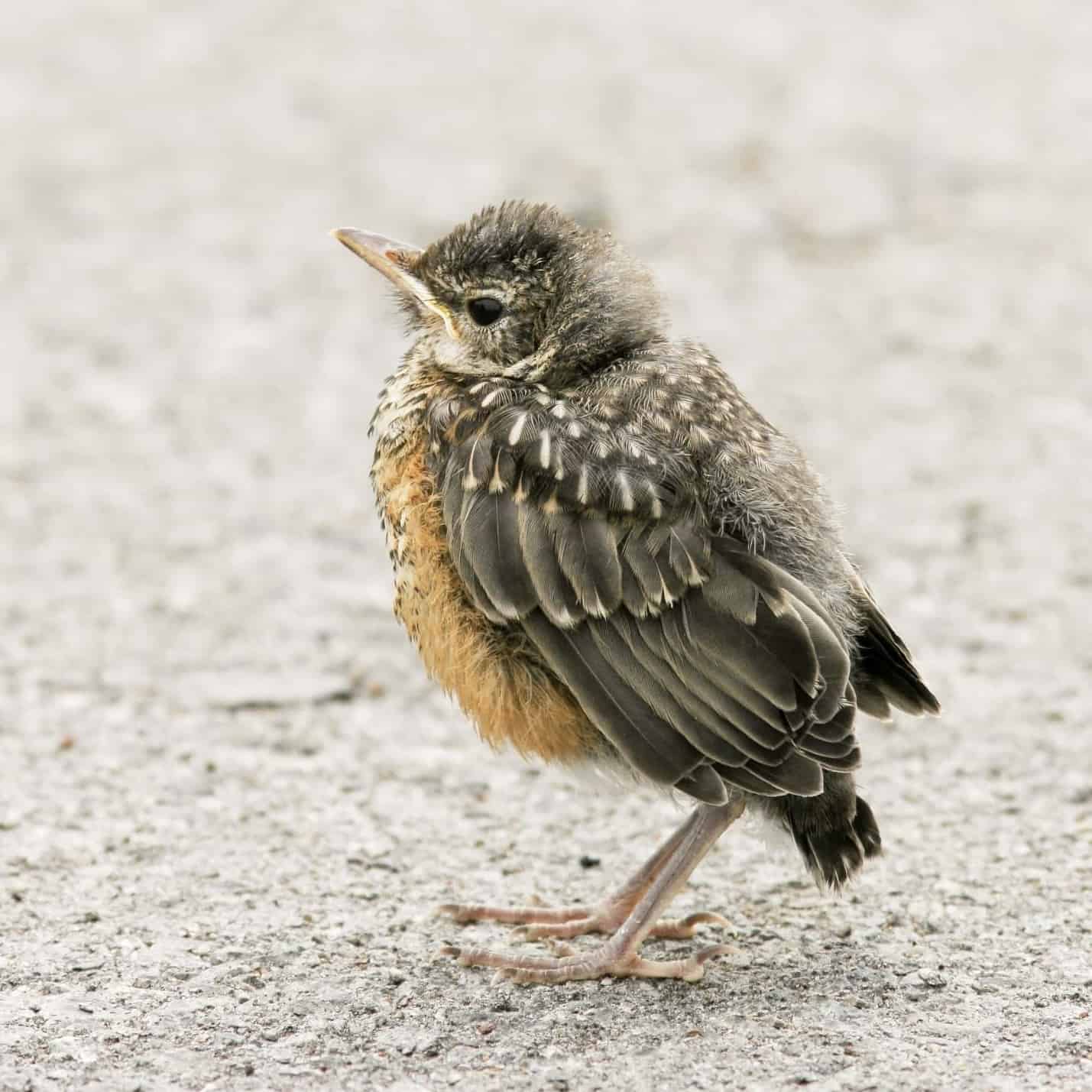Have you ever wondered how to determine the age of those young birds in your garden? It’s actually a little more complicated than you might think. Since most birds are not born ready to fly, they must go through stages of development, just like humans. Therefore a baby bird’s age is measured by developmental milestones. The exceptions to this rule are owls and ducks, as they hatch and are able to fly immediately. Let’s take a look at the 3 general stages of development for baby birds.
Hatchling: 0-3 Days Old
Once a baby bird punctures its egg, it is called a hatchling. The hatchling will have very few feathers if at all, will not open its eyes, and will hardly move. This period of a baby bird’s life is dangerous as they are very weak and vulnerable to predators. Parents of hatchlings will stay close to the nest for protection and regular feedings. After three days, the baby bird is strong enough to finally stand, but is still not a fully functioning juvenile.
In general, birds with longer incubation periods (time within the egg) have more developed hatchlings. For example, Blue Tits have short incubation periods and their hatchlings are blind, featherless, and weak. On the other hand, Coot and Moorhen have longer incubation periods, and their young hatch with downy feathers and are mostly able to survive on their own. For more information about specific species, follow this link.
Nestling: 3-13 Days Old
After day three, the hatchling becomes a nestling. This is when they finally open their eyes and are starting to become covered in feathers or large fluffy down patches. Nestlings will also open their mouths for food whenever something gets near them.
A key factor for determining the difference between a nestling and a friendly fledgling is the colouring inside their mouths. Nestlings have brightly coloured mouths and throats, while fledglings have darker colourations. The nestling stage is incredibly important for wing development. A nestling will have stringy tubes where their wings will develop, but these tubes act as sheaths, and therefore the nestling is bound to the nest and does not move around much. Nestlings are incredibly dependent on their parents for survival until the sheaths break and their wings are developed.
Fledgling: 13 Days Or Older
Once the baby bird’s wings have developed, it can be called a fledgling. Fledglings are still small but they are fully covered in feathers. In comparison to its parents, the fledgling’s wings and tail will appear much shorter.
At this stage, the baby bird can hop around, flutter a little, and even walk around on its own. They have most likely left the nest at this point and it is not uncommon to find fledglings on the ground. Their movements can appear jerky or as if they are injured, but really they are just learning how to move their bodies and coordinate their movements. It is crucial to leave fledglings alone so they can figure out how to fend for themselves. Parents of fledglings tend to feed them every hour, so they are never too far away. The fledgling stage is extremely important developmentally for the baby birds as they are learning how to control their movements before they attempt flight.
Birds That Don’t Have Developmental Stages
Not all birds have the same developmental staging. There are some birds that, upon hatching, have the ability to fly and therefore do not exhibit the same developmental stages as described above. In addition, there are species of bird that develop over a period of time that exceeds the two-week generalisation.
It is always best to reference the developmental stages regardless of bird species. If a bird cannot survive on its own or it does not quite look like an adult, then it is still a juvenile.
If You Find A Baby Bird Outside Of Its Nest
Often we can see baby birds that are on the ground and appear to have lost their parents. We may think they are frightened or sad and need to be helped, but that may not be the case. The first thing to do is to determine if the baby bird actually needs help. Most of the time, the baby birds that are found on the ground are fledglings and they should be left alone. Parents of fledglings return to their babies every hour or so in order to feed them, so try to wait for the parents to return.
However, if you can determine that the baby bird is a hatchling or nestling, it should be immediately returned to the nest, if it is not injured. Birds do not have a great sense of smell, so parents will not abandon their young if you handle them. If you fear a fledgling is in immediate danger, such as that imposed by a nearby predator or being in the way of vehicles, then move it to safety near where it was discovered. Caution must be observed when handling baby birds, as they are very fragile, but they also have sharp beaks and claws which could injure you.
If you need more guidance regarding a baby bird you have found, read this blog post or call your local veterinarian or wildlife rehabilitation centre.

